#Pueblo County
Explore tagged Tumblr posts
Text
Pueblo West recognizes rescuers who saved a drowning dog
New Post has been published on https://petn.ws/zFNs0
Pueblo West recognizes rescuers who saved a drowning dog
A whimpering dog trapped in a water storage basin and clinging to life was discovered by a Pueblo West Metro District water treatment plant worker who called upon two co-workers to help him rescue the canine. Justin Martinez grabbed a ladder and asked coworkers Kyle Staples and Libby Houth to help. As Martinez held the […]
See full article at https://petn.ws/zFNs0 #DogNews #Co, #And, #Animal, #AnimalWelfare, #County, #Dogs, #Emergency, #EmergencyServices, #Government, #Labor, #LaborAndTradeUnions, #Local, #LocalGovernment, #LocalNews, #Neutral, #News, #Overall, #OverallNeutral, #Pueblo, #PuebloCounty, #Rescues, #Services, #Trade, #Unions8217, #Weeds, #Welfare
#(co)#and#animal#animal-welfare#county#dogs#emergency#Emergency services#government#labor#Labor and Trade Unions#local#local government#Local News#neutral#news#overall#Overall Neutral#pueblo#Pueblo County#rescues#services#trade#unions&8217;#weeds#welfare#Dog News
0 notes
Text
Bond for Colorado's Solomon Martinez set at $1 million; What happened to Pueblo's Renee Portillos?
Renee Marie Portillos of Pueblo, Pueblo County, Colorado, United States has died. She was 47.
youtube
View On WordPress
0 notes
Text

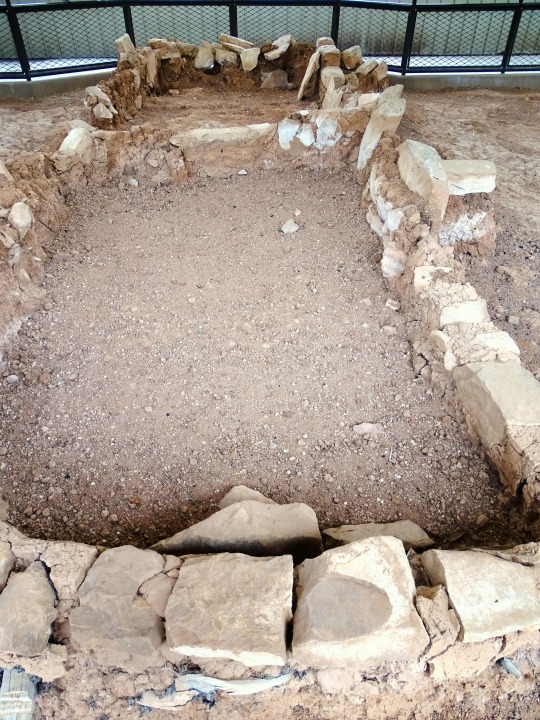
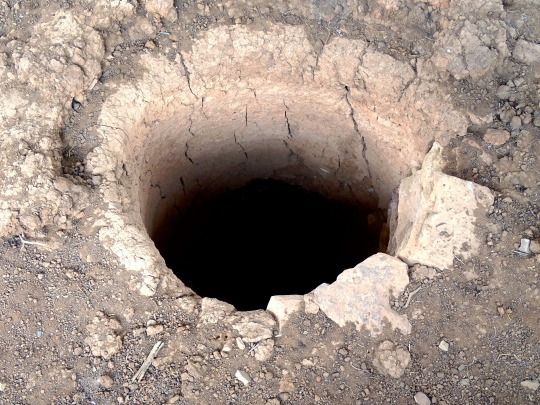


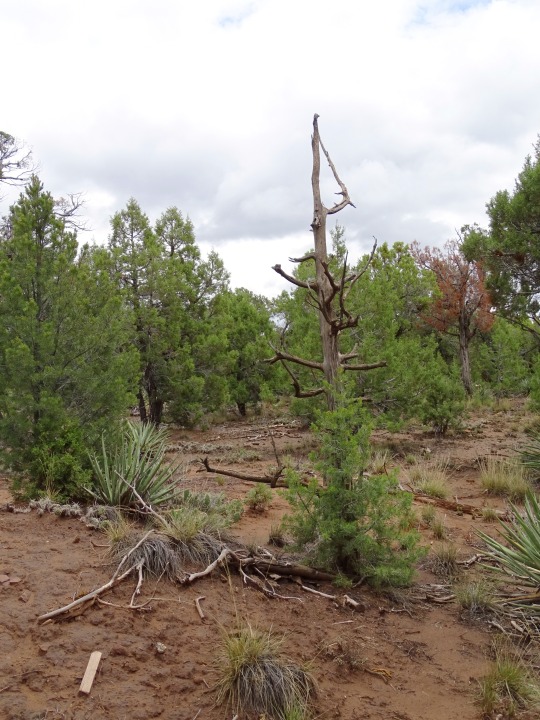

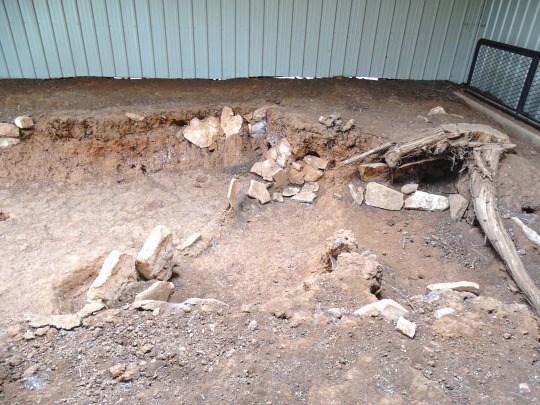

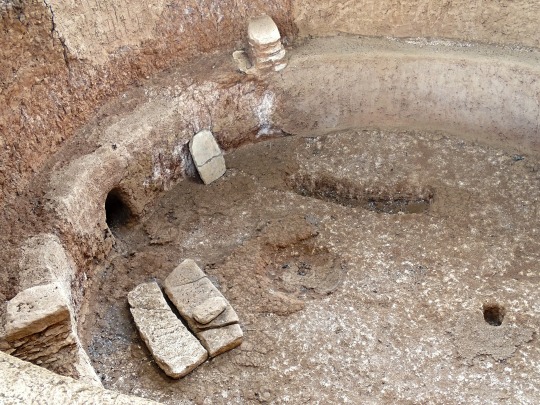
Mesa Verde National Park (No. 9)
6000 BC marks the beginning of the Archaic period in North America. Archaeologists differ as to the origin of the Mesa Verde Archaic population; some believe they developed exclusively from local Paleo-Indians, called the Foothills Mountain Complex, but others suggest that the variety of projectile points found in Mesa Verde indicates influence from surrounding areas, including the Great Basin, the San Juan Basin, and the Rio Grande Valley. The Archaic people probably developed locally, but were also influenced by contact, trade, and intermarriage with immigrants from these outlying areas.
The early Archaic people living near Mesa Verde utilized the atlatl and harvested a wider variety of plants and animals than the Paleo-Indians had while retaining their primarily nomadic lifestyle. They inhabited the outlying areas of the Mesa Verde region, but also the mountains, mesa tops, and canyons, where they created rock shelters and rock art, and left evidence of animal processing and chert knapping. Environmental stability during the period drove population expansion and migration. Major warming and drying from 5000 to 2500 might have led middle Archaic people to seek the cooler climate of Mesa Verde, whose higher elevation brought increased snowpack that, when coupled with spring rains, provided relatively plentiful amounts of water.
By the late Archaic, more people were living in semi-permanent rock shelters that preserved perishable goods such as baskets, sandals, and mats. They started to make a variety of twig figurines that usually resembled sheep or deer. The late Archaic is marked by increased trade in exotic materials such as obsidian and turquoise. Marine shells and abalone from the Pacific coast made their way to Mesa Verde from Arizona, and the Archaic people worked them into necklaces and pendants. Rock art flourished, and people lived in rudimentary houses made of mud and wood. Their early attempts at plant domestication eventually developed into the sustained agriculture that marked the end of the Archaic period, c. 1000.
Source: Wikipedia
#Pithouse and Pueblo#Mesa Verde National Park#UNESCO World Heritage Site#Paleo-Americans#Mountain West Region#ancestral puebloan archaeological site#Montezuma County#Native American history#archaeology#ruins#USA#summer 2022#travel#vacation#nature#flora#tourist attraction#Colorado
28 notes
·
View notes
Text
Tuzigoot National Monument near Clarkdale, Arizona
A pueblo built between 1125 and 1400 CE and a national monument since 1939

View On WordPress
#Arizona#attorney#cloud photography#cloudy day#Coconino County#flagstaff#hiking#lawyer#mountains#pueblo#ruins#Sinagua#trail#Tuzigoot#winter#Yavapai County
2 notes
·
View notes
Text
New Horizons Thrift Store
2930 N Elizabeth St Pueblo CO 81008 USA (719) 276-2676 https://www.newhorizonsthriftstores.com/thrift-stores/pueblo-co/ [email protected]
We use part of our proceeds to lift families out of the destructive cycle of incarceration. Our wide selection of clothing, accessories, home goods, furniture, and more offers the brand names you love at the prices you deserve. You’ll forget you’re in a thrift store as you shop our inventory of high-end items! We also offer unique grocery items such as canned goods, jarred items, and beverages to take home with you.
#thrift store in pueblo#thrift store#thrift store in pueblo county#thrift store in central Colorado#clean thrift store
1 note
·
View note
Text
American Auto Trail-Vietnam Veterans Memorial Highway (Thoreau to Tsaya Canyon NM)
American Auto Trail-Vietnam Veterans Memorial Highway (Thoreau to Tsaya Canyon NM) https://youtu.be/ePDaeTVAg44 This American auto trail follows New Mexico’s Vietnam Veterans Memorial Highway (New Mexico Highway 371) from Thoreau north to Tsaya Canyon.

View On WordPress
#4K#american history#Auto trail#Chaco Canyon#Continental Divide#Crownpoint#McKinley County#Navajo#new mexico#Pueblo#road travel#San Juan County#Seven Lakes#slow travel#Smith Lake
0 notes
Text
what is happening in Valencia (Spain)?
More than 200 people have died and 2000 people are missing since the catastrophe that happened in Valencia, Spain, a couple days ago.
Valencia is one of the most popular and beautiful regions in Spain, often visited by lots of international — and national — tourists to have a great time in the summer.
Meteorologists said a year’s worth of rain had fallen in just eight hours in parts of Valencia — specially, in small towns — this Tuesday. In Spain, this phenomenon is called “Dana”, which is basically a “cold drop”, which causes saturated air to rise rapidly, leading to heavy rain, thunderstorms and tornadoes to happen.
For reference to americans: hurricane milton caused 27 dead, these massive storms in valencia caused more than 90 deaths in a region that is much, much smaller... the weather services warned about the danger, and political authorities still did nothing to send people home from their jobs. the civil alarms reached our phones at 8pm, when many were already trapped in cars, basements, malls, factories. the loss, especially human loss, is incalculable (from: @/woundposting on tumblr)
People who worked overnight for big companies were not even able to go back to their homes and ensure their safety — some of them, lots of them, even lost their lives in that same night. It has been three days now and there are still more reports of disappearances and deaths, and the government is NOT acting like they should. This is a tragedy, which could have been avoided if they only did one thing right, and no one is taking responsability — not the government, not the big companies who didn’t let their workers go home, no one.
It is always the working class people who help the working class people.
Since this is a situation that has took the whole country by surprise and horror, I will put more info under the cut if you want to know more, and if you want to donate to some gofundme’s.
Horta Sud is a county in Valencia that has been the most affected by the floodings. People are leaving their houses because they're scared of the infrastructure getting damaged and even walking by foot to Valencia capital to get food.
Letur (Albacete) is a town that has been destroyed by the floods. You can help rebuild it by donating to this gofundme that's directly coordinated with the town hall.
Hambre Cero is a Spanish food bank non-profit that was founded after the earthquakes in Indonesia. They're currently active in Palestine and Lebanon but they'll also be giving food to those who need it in Spain.
El Refugio de María a dog shelter in Sueca (Valencia), is completely flooded, leaving the dogs visibly distressed and without a proper place to sleep. You can donate to their PayPal: [email protected]
Protectora San Antón is a shelter for cats and dogs in Jerez de la Frontera. It's flooded and the animals don't have a comfortable place to sleep in. If you live in Spain you can bizum them @ 635011715. If not, PayPal [email protected]
Help Sara and her family rebuild their home in Valencia:
there are many more links in twitter. the ones i have put here in this are from a thread posted by @ diangneylo. you can find the link to the thread here, with many more links: https://x.com/diangneylo/status/1851960706536534104?s=46&t=xf1Z6STThFP3w_mF4ugamA
103 notes
·
View notes
Text
"New Mexico will establish a permanent absentee voter list and remove barriers to voting on tribal lands under sweeping legislation signed into law Thursday [March 30, 2023] by Gov. Michelle Lujan Grisham.
The measure also will automate voter registration during certain Motor Vehicle Division transactions and more quickly restore the voting rights of people exiting prison after a felony conviction. It was supported this year by Democratic legislative leaders and Lujan Grisham, a Democrat, after a similar measure died in the final moments of the 2022 session amid a GOP filibuster...
Republican lawmakers fiercely opposed the bill this year, too, contending automatic voter registration and other measures aren't necessary in a state that already allows same-day registration. But advocates of the legislation, House Bill 4, celebrated Thursday [March 30, 2023] as Lujan Grisham signed the bill during a ceremony at the Capitol with Secretary of State Maggie Toulouse Oliver; House Speaker Javier Martínez, D-Albuquerque; and others.
Native American leaders described it as critical step toward protecting the voting rights of people on tribal land, especially those without a traditional mailing address. [More details in/moved to the last key point!]
In a signing ceremony at the Capitol, Lujan Grisham said the legislation would serve as a template for other states. "We want to send a message to the rest of the country — that this is what voting access and protection should look like," the governor said...
Absentee voting: Sign up once
The legislation calls for a permanent absentee voter list to be available in time for the 2024 elections. Voters could sign up once to get absentee ballots mailed to them before every statewide election. People on the list would also get notices mailed to them seven weeks before Election Day. Any election-related mail returned to the county clerk as undeliverable would trigger the voters' removal from the absentee list.
Automated voter registration
Automatic voter registration during some transactions at MVD [DMV] offices — such as when a person presents documents proving citizenship while applying for a driver's license — would begin in July 2025. Newly registered voters would be told they've been added to the voter rolls and that they'll get a postcard in the mail allowing them to decline the registration. For MVD customers already registered to vote, their address would be updated in the voting rolls if they renew their driver's license with a different address.
Restoration of rights
The legislation will restore the voting rights of felons when they leave custody rather than after they complete probation or parole. Inmates would be granted the chance to register or update their registration before release. The Sentencing Project, an advocacy group, estimated the measure will restore the voting rights of more than 11,000 citizens.
New holiday
The bill makes Election Day a school holiday.
Drop boxes
The legislation requires each county to have at least two secured, monitored boxes for people to drop off absentee ballots. State election officials are empowered to waive the requirement or grant requests for additional containers, depending on the circumstances of each county.
Native American voting
The proposal establishes a Native American Voting Rights Act.
[Moved here from earlier in the article]
The measure requires collaboration with pueblos, nations and tribes on establishing polling places, early voting locations and precinct boundaries. It also allows members to register to vote or receive absentee ballots at official tribal buildings — a necessity, supporters said, for residents who don't receive mail at home. "It is truly monumental reform," said Ahtza Chavez, executive director of NM Native Vote and a member of the Kewa Pueblo and Diné Nation. "It requires collaboration with tribes at all levels.""
-via Albuquerque Journal, March 30, 2023
#new mexico#voting rights#voting matters#united states#us politics#good news#american politics#voting#election 2024#native american#indigenous rights#first nations#felon voting#election day#lujan grisham#michelle lujan grisham#hope#hope posting#elections
644 notes
·
View notes
Photo


In 1948, Miguel Trujillo, a WWII Marine veteran and member of the Isleta Pueblo, sued the county registrar (Trujillo v. Garley) and ultimately won the right to vote for Native Americans in New Mexico.
On #MiguelTrujilloDay, we celebrate the work of Native American voting rights activists who continue to fight tirelessly to secure the equal right to vote.
59 notes
·
View notes
Text
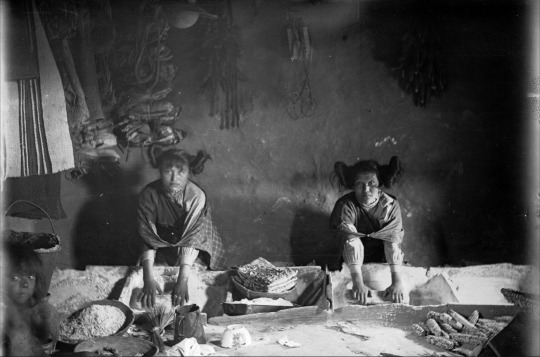
Two Native American (Hopi) women, probably of Oraibi Pueblo (Navajo County), Arizona, grind corn in square containers with metates. Jackson - 1880s
75 notes
·
View notes
Text
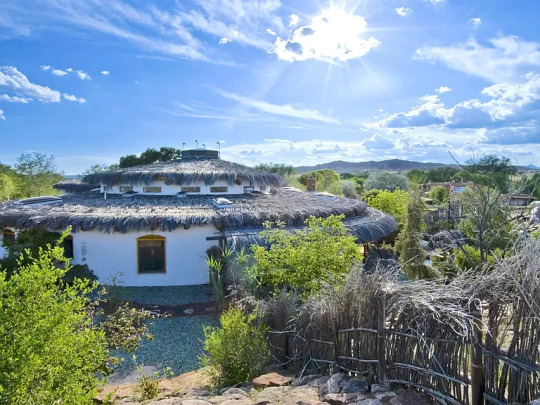
Welcome to the Temple of the Living Goddess. Isn't it interesting how lately, there've been a rash of "cult-y" places for sale? The 1995 hacienda style home in Santa Fe, New Mexico has 9bds, 6ba, and is $1.95M. This property has been on the market for over 2 years.
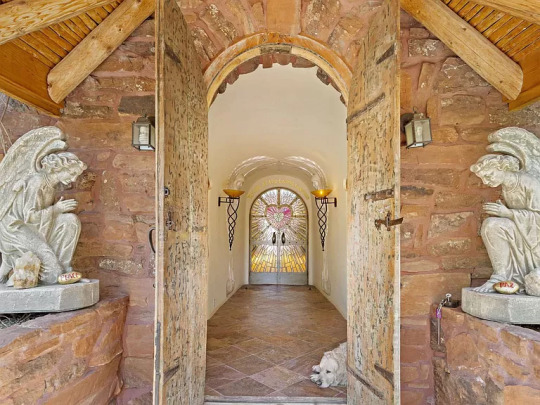
Outer doors open to a long hall. (Does the dog convey?)


And, then you walk down to these arched stained glass doors with a heart. As you can see, "Temple of the Living Goddess" is written in gold over the arch.

I would feel uneasy here. This actually looks like a church. The description says that there's a "retreat building," so I'm guessing that this is it.

Not sure what this large space is.

There are 3 treatment rooms, so maybe this is one of them. I don't know what they're treating.

And, this is clearly a kitchen. A very Zen kitchen- it's so serene.

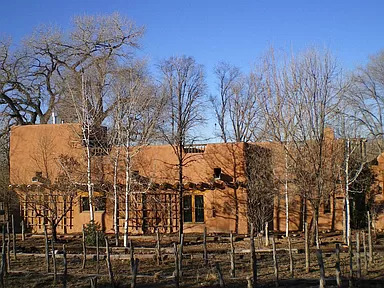
This is the hacienda style residence.

The living room has tree trunk beams and a nice Pueblo style fireplace. I like the built-in shelving, too.

The kitchen is nice- love the tiles.
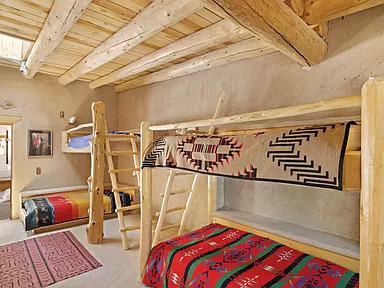
So many large homes have these bunker rooms.

One of the baths is large and has beautiful tile.
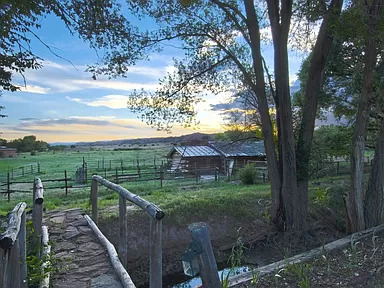
There are 3.47 acres of land with fruit trees and flagstone paths to walk. There's also a 3 bedroom casita.

The property is zoned for several permitted uses including a potential B and B, family compound, religious facility or retreat center. Several other conditional or accessory uses are available with approval of the County of Santa Fe.
92 notes
·
View notes
Text

LETTERS FROM AN AMERICAN
November 29, 2024
Heather Cox Richardson
Nov 30, 2024
In 2008, Congress passed and President George W. Bush signed into law an act making the day after Thanksgiving National Native American Heritage Day.
About a month ago, on Friday, October 25, President Joe Biden became the first president to visit Indian Country in ten years when he traveled to the Gila River Indian Community in Maricopa County, Arizona, near Phoenix. Secretary of the Interior Deb Haaland traveled with him. The trip was designed to highlight the investments the Biden-Harris administration has made in Tribal Nations.
At a press gaggle on Air Force One on the way to Arizona, White House press secretary Karine Jean-Pierre noted that under Biden, Tribal Nations have seen the largest direct federal investment in history: $32 billion from the American Rescue Plan and $13 billion through the Bipartisan Infrastructure Law to build roads and bridges, bring clean water and sanitation, and build high-speed Internet in Tribal communities.
Jean-Pierre added that First Lady Jill Biden has also championed Native communities, visiting them ten times to highlight investments in youth mental health, the revitalization of Native languages, and to improve access to cancer screening and cancer care in Native communities.
Secretary Haaland, herself a member of the Pueblo of Laguna, agreed that the Biden-Harris administration has brought “transformational change” to Native communities: “electricity on the Hopi Reservation in Arizona for homes that have never had electricity; protecting cultural resources, like salmon, which Pacific Northwest Tribes have depended on for thousands of years; new transportation infrastructure for the Mescalero Apache Nation in New Mexico that will provide a safer travel route and boost their economic development, their local economy; addressing toxic legacy pollution and abandoned oil and gas infrastructure that pollutes our air and water for the Osage Nation in Oklahoma; providing clean drinking water for Fort Peck in Montana.”
“Tribal leaders are experiencing a new era,” Haaland added. “They’re at the table. They’re being consulted.”
When Biden spoke at the Gila Crossing Community School, he said he was there “to right a wrong, to chart a new path toward a better future for us all.” As president of the United States, Biden formally apologized to the Native peoples—Native Americans, Native Hawaiians, Native Alaskans—for the U.S. government policy that forced Native children into federal Indian boarding schools.
The apology comes after the release of an Interior Department study, The Federal Boarding School Initiative, that Secretary Haaland directed the department to undertake in 2021. According to Assistant Secretary of the Interior Bryan Newland, a citizen and former president of the Bay Mills Indian Community (Ojibwe), the initiative was “a comprehensive effort to recognize the troubled legacy of Federal Indian boarding school policies with the goal of addressing their intergenerational impact and to shed light on the traumas of the past.”
The initiative set out to identify federal Indian boarding schools and sites, to identify the children who attended those schools and to identify their Tribal identities, to find marked and unmarked burial sites of the remains of Indian children near school facilities, and to incorporate the viewpoints of those who attended federal Indian boarding schools and their descendants into the story of those schools.
The report looked at the Indian education system from 1819 to 1969 as a whole, bringing together federal funding for religious schools in the early 1800s with later explicitly federal schools and their public school successors during and after the 1930s. But historians generally focus on the period from 1879 to the 1930s as the boarding school era.
In 1879, the government opened the Carlisle Indian Industrial School, a boarding school for American Indian children in Carlisle, Pennsylvania, explicitly designed to separate children from their families and their culture and to train them for menial jobs.
The boarding school era was the brainchild of Army officer Richard Henry Pratt, a Civil War veteran who, in the years after the war, commanded the 10th United States Cavalry, a Black regiment stationed in the American West whose members Indigenous Americans nicknamed the “Buffalo Soldiers.” Pratt fought in the campaigns on the Plains from 1868 through 1875, when he was assigned to oversee 72 Cheyenne, Kiowa, Comanche, Arapaho, and Caddo prisoners of war at Fort Marion in St. Augustine, Florida (now known as the Castillo de San Marcos National Monument).
Many Indigenous prisoners at Fort Marion, taken from the dry Plains to the hot and humid coast of Florida where they were imprisoned in a cramped stone fort, quickly sickened and died. Pratt worked to upgrade conditions and to assimilate prisoners into U.S. systems by teaching them English, U.S. culture, Christianity, and how the American economy worked. He cut their hair, dressed them in military-type uniforms, and urged them to make art for sale to local tourists—it’s from here we get the world-famous collection of ledger art by the artists of Fort Marion—but focused on turning the former warriors and their families into menial workers.
After the Battle of the Little Bighorn in 1876 and the subsequent pursuit and surrender of leading Lakota bands throughout that year and the next, leading to the murder of Crazy Horse in 1877, popular opinion ran heavily toward simply corralling Indigenous Americans on reservations and waiting either for their assimilation or extermination. At the same time, with what seemed to be the end of the most serious of the Plains Wars, Army officers like Pratt had reason to worry that the downsizing of the U.S. Army would mean the end of their careers.
Indigenous survivors of Fort Marion returned home to see that the American government had no real plans for a thriving American Indian populace. There was little infrastructure to link them to the rest of the country to sell their art, and Indian agents rejected tribal members for jobs in favor of white cronies.
But Pratt considered his experiment at Fort Marion a great success, and he came to believe he could make his system work even more thoroughly by using a loophole in the treaties between Plains Tribes and the U.S. government to force Indigenous Americans to assimilate as children. He planned, he said, to “Kill the Indian and save the man.”
Treaties between Plains Indian Tribes and the government required the U.S. government to educate American Indian children—something their parents cared deeply about—but the treaties didn’t actually specify where the schools would be. So Pratt convinced the U.S. Army and officials at the Interior Department to give him the use of the Carlisle Barracks to open an industrial school, designed to teach American Indian children the skills necessary to be servants and menial workers.
In summer 1879, Pratt traveled to western reservations of the Lakotas and Dakotas, primarily, to gather up 82 children to begin his experiment in annihilating their culture from their minds. He forbade the practice of any aspect of Indigenous culture—language, religion, custom, clothing—and forced children to change their names, use English, practice Christianity, and wear clothing that mirrored that of Euro-American children.
Crowded together, many children died of disease; bereft of their family and culture, many died of heartache. Some found their newfound language and lessons tolerable, others ran away. For the next fifty years, the Carlisle model was the central model of government education for Indigenous children, with tens of thousands of children educated according to its methods.
In the 1920s the Institute for Government Research, later renamed the Brookings Institution, commissioned a study funded by the Rockefeller Institute—to make sure it would not reflect government bias—to investigate conditions among Indigenous Americans.
In 1928 that study, called the Meriam Report, condemned the conditions under which American Indians lived. It also emphasized the “deplorable health conditions” at the boarding schools, condemned the schools’ inappropriate focus on menial skills, and asserted that “[t]he most fundamental need in Indian education is a change in point of view.” In 1934 the Indian Reorganization Act reversed the policy of trying to eradicate Tribal cultures through boarding children away from their families, and introduced the teaching of Indian history and culture in federal schools.
But the boarding schools remain a central part of the experience of American Indians since the establishment of the U.S. government in North America, and the Federal Boarding School Initiative recommended that “[t]he U.S. Government should issue a formal acknowledgment of its role in adopting a national policy of forced assimilation of Indian children, and carrying out this policy through the removal and confinement of Indian children from their families and Indian Tribes and the Native Hawaiian Community and placement in the Federal Indian boarding school system.”
It continued: "The United States should accompany this acknowledgment with a formal apology to the individuals, families, and Indian Tribes that were harmed by U.S. policy."
On October 25, 2024, President Joe Biden delivered that apology.
LETTERS FROM AN AMERICAN
HEATHER COX RICHARDSON
#Heather Cox Richardson#Letters From An American#American History#native Americans#American Indians#Federal Boarding School Initiative#Indian Children#Indian Reorganization Act#American Heritage Day
14 notes
·
View notes
Text




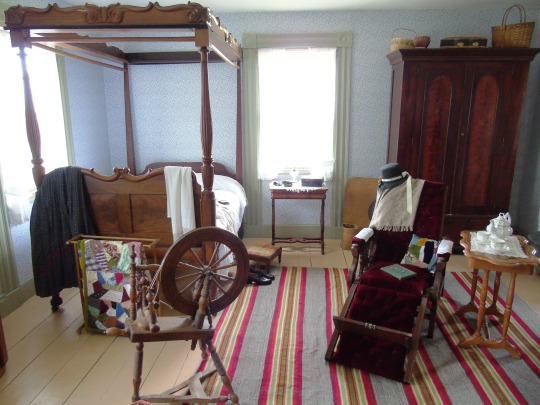

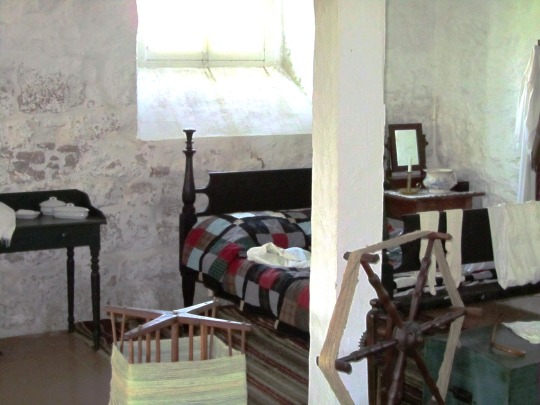
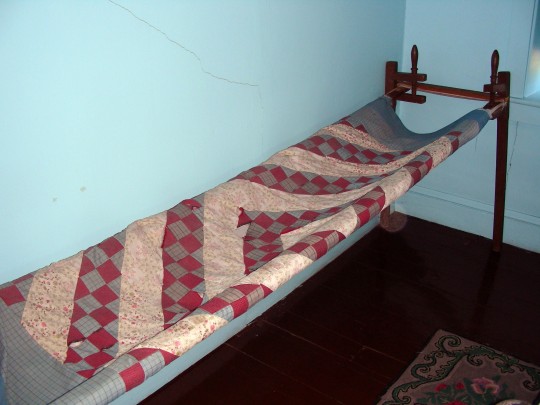




National Quilting Day
A quilt is a type of bed cover, traditionally composed of three layers of fiber, a woven cloth top, a layer of batting or wadding, and a woven back, combined using the technique of quilting. A quilt is distinguishable from other types of blankets because it is pieced together with several pieces of cloth.
National Quilting Day recognizes quiltmakers and their quilt-making abilities. The word ‘quilt’ comes from the Latin word ‘culcita,’ which means stuffed sack, it became adapted to the English language from the French word ‘cuilte.’
Quilting practices can be found in almost every area of the world and it is celebrated on the third Saturday in March every year. The National Quilting Association started National Quilting Day in 1991 and since then it has grown into a global celebration for all quilt lovers and makers.
History of National Quilting Day
Quilting refers to the technique of joining at least two fabric layers by stitches or ties. The quilting practice dates back as far as 3400 B.C. It was mainly a practical technique that provided physical protection and insulation. However, decorative elements were often also present and many quilts are now primarily art pieces.
In the United States, quiltmaking was common in the late 17th century and early years of the 18th century. In these times, only the wealthy had the time to practice quilting so it was done by only a few persons. Commercial blankets or woven coverlets were a more economical bed covering for most people unlike the colonial quilt bed covering which displayed the fine needlework of the maker, such as the Baltimore album quilts. Presently, quilting is now a popular hobby, with an estimated base of twenty-one million quilters.
The oldest example of a quilted piece is kept at the Saint Petersburg department of the Russian Academy of Sciences, Archaeology section. It is a linen carpet that was found in a Mongolian cave, between 100 B.C. and 200 A.D.
The origin of the quilting day can be traced to the Quilters Day Out, which was organized by the Kentucky Heritage Quilt Society in 1989 to celebrate the ancient tradition and its practice in the state of Kentucky. Two years later, this event became so popular that the National Quilting Association decided to declare an official holiday for quilting. From this day, the name changed from Quilters Day Out to National Quilting Day. Over the years, this event has attracted people to celebrate from all over the world and participate in helping to build and maintain the global heritage of quilting.
The first remnants of quilting were dated to 3400 B.C., showing that this art form had existed far into pre-history. They were traded extensively until sometime in the 12th century when these types of trade goods were returned from the Middle East by the Crusaders. Since then, it had become an integral part of the Colonial textile arts and one of the things they were well known for.
National Quilting Day timeline
1170 — 1800
The Birth of Pieced and Applique Quilts
During American Colonial times, quilts are known to be predominantly whole cloth quilts. Later on, pieced and applique quilts begin to appear.
1989
The Roots of Quilting Day
Quilters Day Out is first organized by the Kentucky Heritage Quilting Association in 1989, which later leads to the birth of National Quilting Day.
1991
The Dawn of National Quilting Day
In June, members of the National Quilting Association pass a resolution in Lincoln, Nebraska, for the celebration of National Quilting Day.
2001
Commemoration of the Demise
The National Quilt Museum is honored to host a collection of quilts from the 9/11 Memorial and Museum for the commemoration of the 20th anniversary of the September 11 attacks.
National Quilting Day FAQs
When do people celebrate National Quilting Day?
National Quilting Day is celebrated on the third Saturday in March annually.
What month is National Quilting Month?
National Quilting Month is celebrated during the month of March.
What are the types of quilts?
There are three types of quilts, namely patchwork quilts, applique quilts, and embroidered quilts.
How to Celebrate National Quilting Day
Hang quilts outdoors: On National Quilting Day, quilts are hung outside the homes to educate and inspire people to join in celebrating this ancient creative skill and as a sign that you recognize this event and that you are observing it.
Show your quilting skills: This holiday is a time to share your skills with others by offering to teach a simple quilt project A.M.D. showing them how it’s done. You can decide to teach this to your relatives/family members, schools, neighbors, friends, or a youth group.
Make it a service day: On this day, you can work on a quilt for your favorite cause — either national or local projects. You can also check departments and facilities like the police and fire departments, nursing facilities, or children’s services to see if they have a need for quilts.
5 Fascinating Facts About Quilting
The origin of the word: The word ‘quilt’ comes from the Latin word ‘culcita’, meaning a stuffed sack.
There is an identity behind a quilt: It would interest you to know that quiltmakers make the quilts in such a way that depicts the quality of their lives or custom. Think of it as a book of tradition where pieces of stories are sewed together.
A precious heritage: Apart from the professional quiltmakers, women of the old generation can make a traditional quilt and it is passed down from one generation to the other; from grandmother to mother and mother to daughter.
For armor protection: Medieval knights used quilted pads under their armors, to protect them from chaffing and to prevent the armor from rusting from sweat.
Interest for the husband: During the 19th century, it was customary for a woman to show her quilting skills to her new husband.
Why We Love National Quilting Day
It’s a day for fun: It is a day to share in the fun and appreciate the history of quilts; to share quilting stories, fabrics, and patterns.
It’s a time to reflect on the old times: Quilting is a practice that can be dated as far back as 3400 B.C. Quilting day allows us to appreciate this old-time art, understand the history, and value it, like a connection between the past and present, creativity and heritage.
It’s a day to understand its symbolism: Quilts often symbolize resourcefulness, as quilters use what resources are available to them to make a quilt covering. They also symbolize heritage.
#log cabin#Kings Landing Historical Settlement#New Brunswick#Canada#summer 2015#2012#original photography#tourist attraction#landmark#Lower Fort Garry National Historic Site of Canada#Manitoba#El Pueblo de Los Angeles Historical Monument#Los Angeles Plaza Historic District#Avila Adobe#National Quilting Day#NationalQuiltingDay#16 March 2024#third Saturday in March#Pennsylvania#2009#Amish Country#Lancaster County#British Columbia#travel#vacation#USA#architecture#Los Angeles
7 notes
·
View notes
Text
Round 1, Match 3: Decorated Yellow-ish Wares
AND WE'RE BACK!
Jeddito Yellow Ware


Left, a Sikyatki Polychrome jar, 1400-1625, from the Hopi Mesas; Right, a stipple-decorated Jeddito Black-on-Yellow bowl, 1375-1630, Hopi Mesas.
vs.
Hohokam Red-on-Buff


Left, Sacaton Red-on-buff jar, 950-1150, Gila Bend, Maricopa County, central Arizona; Right, Santa Cruz red-on-buff jars, 850-1000, Maricopa County, central Arizona.
More information and examples under the cut:
Jeddito Yellow Ware


Jeddito Black-on-yellow Bowl, 1365–1400 C.E., Homol'ovi, Hopi Mesas.
Jeddito Yellow is an Ancestral Hopi pottery, made on and around the Hopi Mesas in north-central Arizona. There are three mesas, called the Hopi Mesas, where most Hopi villages are congregated; they have been continuously occupied for more than a thousand years. However, the Hopi clans there also have a long and intertwining history of of migration, of congregation of clans, of ethnogenesis and becoming. During the great drought of 1275-1292, some of the people who evacuated southern Utah and northeastern Arizona moved to the Hopi Mesas and joined the ancestral Hopi there. Salado polychrome never took a significant hold here; instead, Jeddito Yellow Wares proliferated.
Jeddito Yellow is a ware with many decorative types within it, from black- and brown-on-yellow, to stipple decorated, to the striking and famed Sikyatki Polychrome. It is built of thin coils, high-fired via coal-burning (unique for the Southwest), porcelain-like in their hardness and brittleness, and uses a very fine, almost microscopic temper. It's been speculated, admittedly a bit fancifully (Hargrave, 1935) that this rich and highly polished yellow pottery may have been the golden plates and cups that the Spanish conquistadores heard about when they were searching for the mythical Cibola. They're beautiful enough to be.
Hohokam Red-on-Buff


Santa Cruz Red-on-buff jar, 750-1150, Pinal County, Arizona (near Phoenix)
Some of the earliest painted pottery in the Southwest, Hohokam red-on-buff exists in multiple striking types - Snaketown, Santa Cruz, and Sacaton Red-on-buff being some of the most widespread and distinctive. They are typically unslipped, with bold or hatched repeating designs in red paint. They were made in central and southern Arizona.
Unlike Ancestral Pueblo and Mogollon pottery, which was made with the coil-and-scrape technique, Hohokam pottery was made with a technique called "paddle-and-anvil." It was still coil-built, but the coils used to build the pot were typically bigger than the thin coils of northern and eastern types. To merge the coils and thin the pot, potters used a wooden paddle to strike the outside, and a stone anvil held against the inside to brace against. In this way the coiled walls were thinned, shaped, compressed, and drawn up.
21 notes
·
View notes
Text







Post 0632
Austin Brookshire, Mississippi inmate 246060, born 2001, incarceration intake in August 2023 at age 21, sentenced to life
Murder
Brookshire, one of two men charged in the murder of Willie “Chill” Jones, a Picayune man who went missing and was later found dead in 2020, was sentenced to life in prison in July 2023.
On July 6, 2020, Jones was reported missing to the Picayune Police Department by his family.
Austin R. Brookshire and his half-brother Dustin Michael Gray, 24, of Picayune, who Jones considered a friend, had planned to rob Jones of a large amount of money he was keeping in a box, according to press accounts.
Brookshire then shot and killed Jones in the backseat of Dustin Gray’s car in Pearl River County and took Jones’ body to a wooded area on Texas Flat Road in Hancock County, where they buried him in a shallow grave, according to records.
An affidavit from the case said that Gray then attempted to get his car washed but employees at the car wash he went to refused after seeing the blood in the backseat.
Gray’s wife was charged with accessory after the fact to murder and allegedly helped try to clean the vehicle before fleeing with Gray to Pueblo, Colorado, where they were eventually picked up by authorities and extradited back to Mississippi.
Gray’s father, attorney James L. “Jim” Gray, turned over Gray’s vehicle to the police after seeing the blood in the backseat. Jim Gray received threats and his office was burned down as his son was on the run from authorities.
Misinformation spread through rumors on social media led to right-wing militias gathering in Picayune over false notions that instead of a vigil for a missing Black man, a group of Black Lives Matter and Antifa supporters were going to allegedly burn down the town. That did not happen, but right wing militia members amassed in Picayune anyway without violence.
Austin Brookshire was found guilty in a trial on May 24, 2023.
3g
Last reviewed November 2024
83 notes
·
View notes
Photo

Number of Spanish Missions in California and Baja California by county/municipality
by mexidominicarican8
<div class="md"><p><strong>California:</strong></p> <p>The Spanish missions in California formed a series religious outposts or missions established between 1769 and 1833 in what is now the U.S. state of California. The missions were established by Catholic priests of the Franciscan order to evangelize Indigenous peoples backed by the military force of the Spanish Empire. Civilian settlers and soldiers accompanied missionaries and formed settlements like the Pueblo de Los Ángeles. Indigenous peoples were forced into settlements called reductions, disrupting their traditional way of life and negatively affecting as many as one thousand villages</p> <p><strong>Baja California:</strong></p> <p>The Spanish missions in Baja California were a large number of religious outposts established by Catholic religious orders, the Jesuits, the Franciscans and the Dominicans, between 1683 and 1834 to spread the Christian doctrine among the Indigenous peoples living on the Baja California peninsula. The missions gave Spain a valuable toehold in the frontier land, and introduced European livestock, fruits, vegetables, and industry into the region. Indigenous peoples were severely impacted by the introduction of European diseases such as smallpox and measles and by 1800 their numbers were a fraction of what they had been before the arrival of the Spanish.</p> <p><strong>Mexico:</strong></p> <p>The First Mexican Republic secularized the missions with the Mexican secularization act of 1833, which emancipated indigenous peoples from the missions. Mission lands were largely given to settlers and soldiers, along with a minority of indigenous people. Most of the missions in Baja California were abandoned and are currently in ruins. Cities like Loreto, Mulegé, La Paz, and San José del Cabo were formed near/around Spanish missions</p> <p><strong>USA:</strong></p> <p>Many of these missions were restored in the mid 20th century. They have become a symbol of California, appearing in many movies and television shows, and are an inspiration for Mission Revival architecture. Concerns have been raised by historians and Indigenous peoples of California about the way the mission period in California is taught in educational institutions and memorialized. The oldest European settlements of California were formed around or near Spanish missions, including the four largest: Los Angeles, San Diego, San Jose, and San Francisco.</p> </div>
60 notes
·
View notes